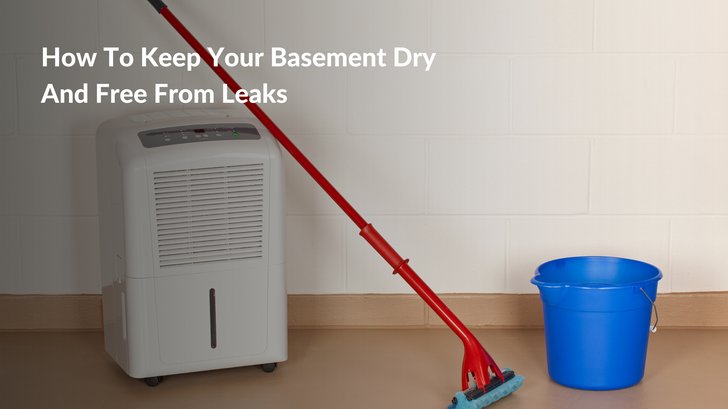Throughout the year, your basement is likely to become damp, but spring and summer are the most likely times. Moisture can also condense on the walls of your basement if rainwater seeps through cracks. Rainwater and condensation aren't the only sources of basement moisture.
Preventive measures, such as waterproofing the basement, are important no matter where the leak originates. Be sure to understand what causes basement moisture before you start any fixes. Whether you're trying to prevent future water issues or dealing with recurring dampness, basement waterproofing is a key part of long-term protection. Read on and learn how to keep your basement dry and free from leaks.
What Causes the Basement to Get Wet?
You can get a damp basement from moist, humid air from outside. A dryer vent or basement vent may let in this moisture. Cracks in the foundation may also allow water to seep in. It doesn't stop there. Water can enter our porous drywall because of oversaturated soils.
The moisture level should be concerning if it exceeds 60%, because this is when most problems will arise. Signs that your basement has water or moisture issues include:
- There is a musty odor
- There is visible condensation
- There are mold spots
- Wall paint that peels
- Floors that are warping
How Can I Keep My Basement Dry?
You can try these solutions.
Grade Your Home’s Yard
Make sure the exterior ground around your home slopes gently outward, not inward, to ensure that water can flow away from your home’s foundation when it rains. Rainwater can penetrate your basement via cracks in the foundation and collect on your basement floor. Grading will help prevent backflowing water resulting in a dryer basement during rainy seasons.
Fix Gutters and Downspouts
Most homeowners check their roof once a year or if they notice there’s a leak. Summer has its fair share of rains resulting in gutters and downspouts backing up. This abundance of water can easily overtake the roof and your gutters if it is clogged and not properly maintained. Once the water spills out of the gutter, it will collect on the ground surrounding your home’s foundation. Another easily forgotten step is to angle your downspouts away from your home. Badly angled downspouts will result in water pooling close to your home, instead of being directed away from your basement.
Waterproof your Basement
Installing an interior drainage system is vital for waterproofing your basement, this includes a sump pump. These systems work together to remove water from your basement and get it back outside, where it belongs.
Dehumidifiers
A basement can become damp if there is not enough ventilation. Moisture can also collect in basements because of air leaks, open windows and doors, and poor sealing around pipes and vents. A dehumidifier can help reduce the amount of moisture in your basement. Dehumidifiers remove the moisture from the air and then release it through a drain. If you install a dehumidifier with an automatic shutoff feature, you won’t need to empty buckets of water every day!
Keep the Windows Closed
It is important to keep your house dry. Moisture can cause mold growth and other issues. If you leave your basement windows open or your front door open, you could end up with a wet basement. Humidity levels in your house will increase and this will lead to moisture-related problems. Moisture can also enter through cracks in your foundation. You should try to seal these cracks.

 Lifetime Warranty On All WWS Covers
Lifetime Warranty On All WWS Covers
 Free Shipping On All Products
Free Shipping On All Products





 (262) 633-3707
(262) 633-3707

 info@windowwellsupply.com
info@windowwellsupply.com
